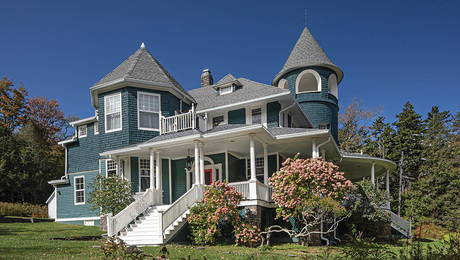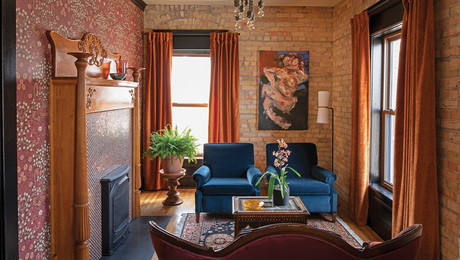A Better Approach to Design/Build
How integrating design and construction made a really, really complicated home doable.

Synopsis: In this article, environmental and energy-design specialist Ann Edminster recounts her experience as a consultant initially hired to brief the project team for a new house on the LEED for Homes program. After hearing Edminster’s presentation, the future homeowners decided they wanted their home to be a model of sustainability. The problem, as Edminster pointed out, was that the members of the project team had been chosen for their design expertise rather than their expertise in green building. Edminster recommended an approach to the project known as integrated project delivery (IPD), which intertwines the design and construction phases. The new process began with a two-day workshop in which the entire team gathered to develop concrete performance goals and set the course for the remainder of the project. Throughout the rest of the article, Edminster weaves into her account of the building of this particular house advice for anyone wanting to use the IPD approach. The article also includes three sidebars: (1) a list of the ambitious goals set at the workshop, (2) a review of the cloud-based software applications that facilitate the extensive collaboration that’s part of the IPD approach, and (3) a graphical representation of traditional project delivery vs. IPD.
The most ambitious project I’ve ever worked on is a spectacular, über-green home in the foothills west of Silicon Valley. The owners, Linda Yates and Paul Holland, contacted me in May 2006 to request that I brief their project team on LEED for Homes, then in its prepilot stage. Six years later, in November 2012, I had the pleasure of leading a tour of the house as part of the U.S. Green Building Council’s Greenbuild conference. I invited Fine Homebuilding editor Brian Pontolilo to tag along. Brian heard a lot that day about how an integrated process enabled us to achieve extremely high performance goals while building a very complicated house—without sacrificing sanity or our professional relationships. He asked me to share my insights here.
Off on the wrong foot
Not long after that initial conversation, I met with the project team at Hill-Glazier Architects (now HKS/Hill Glazier Studio) in Palo Alto. In attendance were architect Bob Glazier, a builder, a landscape architect, a lighting designer, and an interior designer. I delivered the requested spiel about LEED for Homes, responded to questions, and was out the door in 90 minutes.
A few days later, Linda called to tell me they wanted their new home to be a model of sustainability—as green as possible in every conceivable aspect. She also wanted to reach for LEED Platinum. She asked me to arrange for expert guest lectures to help their team members— who had been selected for their design excellence rather than green expertise—achieve these goals. Recalling the set of plans I had seen in Hill-Glazier’s office, I realized that these goals would be extremely difficult to achieve with a design that was well downstream.
“You don’t need guest lectures,” I told Linda. “You need triage.”
I followed that diplomatic opener by explaining that optimizing green performance required an integrated approach that viewed the house as an assembly of interdependent systems, much like the human body. To integrate these systems successfully, we would have to revisit the design. Linda agreed immediately.
Next step in the right direction
Integrated project delivery (IPD), is an approach by which the design and construction phases of a project are concurrent and intertwined. Unlike the traditional approach, in which a project is designed on paper by one person and built later by another, IPD recognizes the interdependence between design and construction.
My prescription for Paul and Linda’s project started with a two-day workshop, or charrette, in which the entire team would collaborate on setting concrete performance goals, scrutinize the current design, identify challenges, and set the course for the remainder of the project. I called upon Bill Reed of Regenesis Group to run the charrette, and rounded out the existing team roster with structural engineer Bruce King and permaculturist Penny Livingston of Regenerative Design Institute in Bolinas, Calif. By the end of the charrette, our group of about 15 developed a set of specific performance goals for the project. Among many others, these included achieving net-zero energy; using only natural and nontoxic materials; creating a durable, long-lasting home; minimizing waste; and minimizing use of municipal water.
For more photos and details on a better approach to design/build, click the View PDF button below.

























